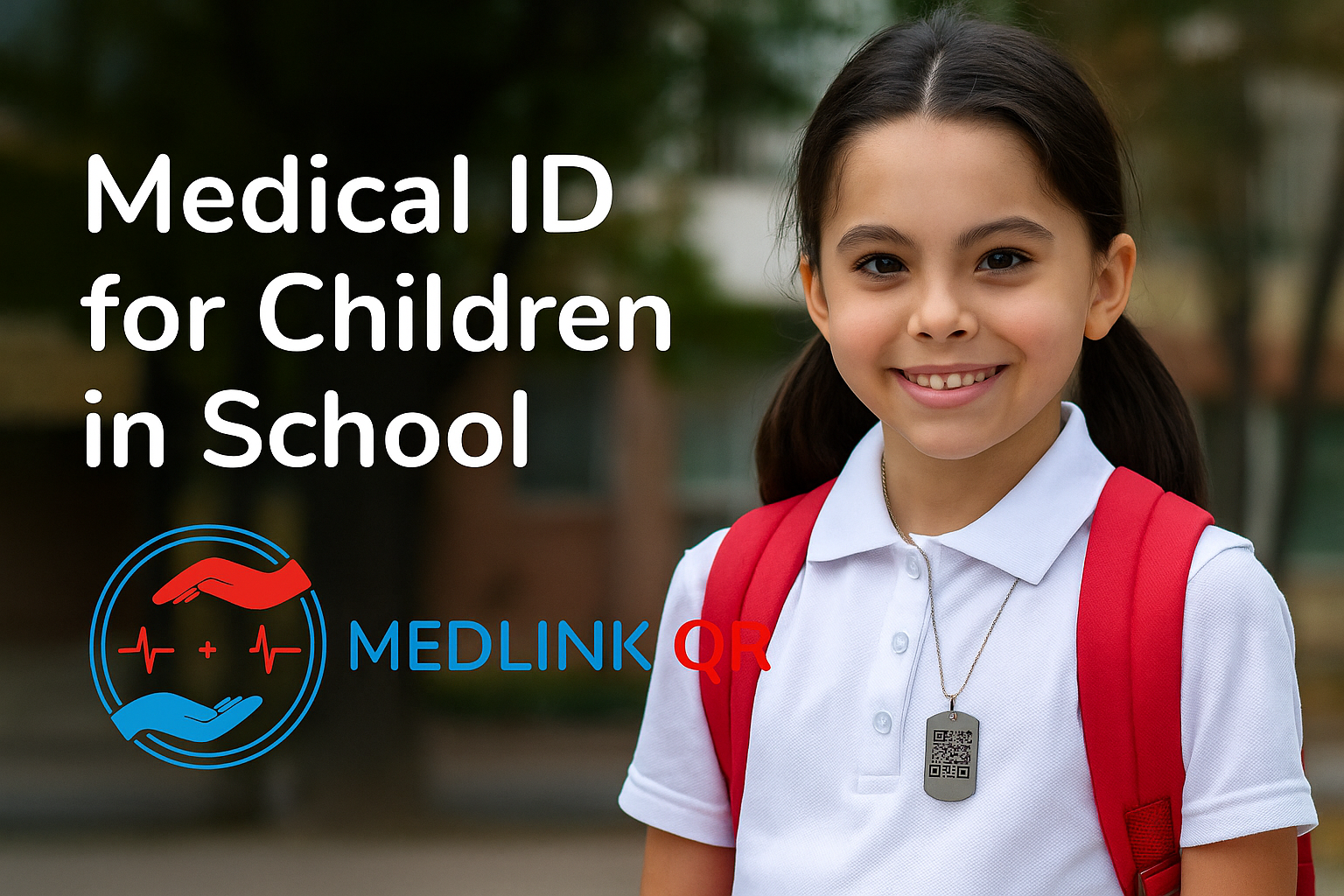Keeping Children Safe at School with a Medical ID Necklace

For many parents and caregivers, sending a child off to school brings worries about their health and safety—especially if the child has allergies, asthma, diabetes, or other medical conditions. In school settings, rapid access to accurate medical information can make a life-or-death difference. A Medlink QR medical ID necklace offers a modern, effective way to ensure that teachers, school staff, and first responders have the information they need — even if the child can’t speak for themselves.
Why a Medical ID Matters in School
Children spend many hours at school, often under the care of adults who may not know their full medical history. If an emergency occurs, having a medical alert device can:
- Reveal key health details (allergies, chronic conditions, medications)
- Provide emergency contact information
- Help first responders act quickly without guesswork
- Reduce the risk of harmful mistakes
Traditional medical IDs (bracelets, tags) have long served this role. What sets Medlink QR apart is the digital QR-based profile behind the physical necklace — so more information (without cluttering the neck tag) can be accessed instantly via a scan.
How Medlink QR Enhances School Safety
A Medlink QR necklace blends the familiarity of medical jewelry with smart technology:
- Scan for full profile: The QR code links to a secure online profile showing condition details, medications, allergies, special instructions, and contacts.
- Always up to date: You can update the profile anytime, so changes (new medications, updated contacts) are immediately reflected.
- Discreet but powerful: The pendant remains sleek and wearable; it doesn’t need to show all data on the metal surface.
- No special app needed: Any smartphone with a QR scanner (or camera) can access the data, making it easy for school staff, nurses, or EMTs.
What to Include in the Child’s Medical ID Profile
To make the medical ID truly useful, consider including:
- Child’s full name
- Medical conditions (e.g. asthma, diabetes, epilepsy)
- Regular medications and dosages
- Known allergies (food, drug, insect, etc.)
- Emergency contacts (parents, guardians, doctor)
- Any special instructions (e.g. “use epinephrine,” “avoid peanuts”)
- Physician or specialist contact
These elements help school nurses and emergency personnel act confidently and appropriately.
Tips for Implementing a Medical ID in the School Setting
- Inform school staff
Let teachers, the school nurse, and administrators know your child wears a medical ID necklace. Show them how it works, and ensure they’re comfortable accessing it. - Teach the child
Educate your child (age-appropriately) about their medical ID: what it does, when to wear it, and how to tell an adult to scan it in an emergency. - Backup identification
While the necklace is the primary tool, also consider having a written emergency card or including info in a school health form. - Regularly review and update
Medical conditions and medications may change over time. Check the profile periodically and whenever there is a new diagnosis or treatment change. - Encourage awareness
A medical ID can also serve as a conversation starter — helping classmates, teachers, and staff better understand and support the child’s condition.
Who Benefits Most from a Medical ID Necklace
While any child with a medical condition benefits, especially important groups include:
- Children with severe allergies or anaphylaxis
- Students with asthma, diabetes, epilepsy, or heart conditions
- Kids on multiple medications
- School travelers, field-trip participants, or students in heavy activities
In such cases, fast access to the right information could prevent confusion or dangerous delays.
Why Choose Medlink QR
By choosing Medlink QR, you combine the reliability of physical medical jewelry with the power and flexibility of digital health records. The result is:
- A durable, wearable necklace built for daily use
- Encrypted, secure medical data you control
- Quick, instant access to critical health information
- A modern and practical safety tool for children in school
Let your child’s medical ID do the talking when they can’t — giving peace of mind to you, the school, and first responders whenever and wherever they need it.
